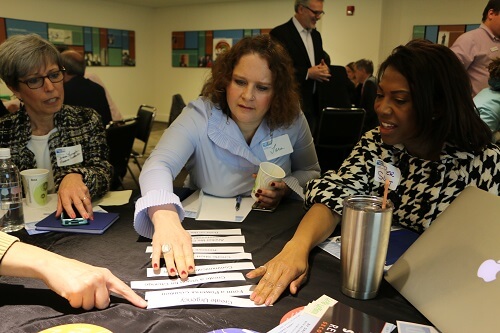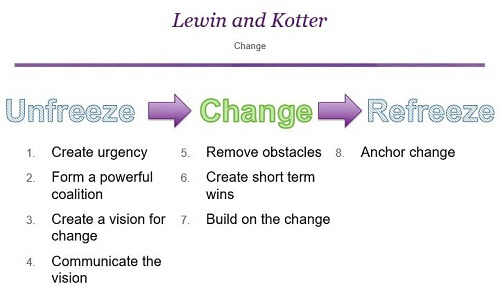Frameworks That Can Help Your Nonprofit Manage Change

Nonprofit effectiveness requires effectively managing change. This speaks not only to the need for adaptation and the ability to rapidly identify challenges and opportunities, develop strategic responses, and execute on these priorities — but also to ensure that organizational culture enables, supports, and sustains the transformation.
(Because…say it with us: “Culture eats strategy for breakfast!”)
Nonprofit change management was the theme of one of our 2018 Twentieth Anniversary Workshops. It was attended by dozens of nonprofit leaders working in the greater Charlotte area. Hosted by United Way of Central Carolinas, the session featured three panelists sharing their change management stories and a presentation by David La Piana on frameworks for adaptive change.
We also engaged workshop participants in thinking critically about: How does change happen? In an exercise based on John Kotter’s Eight-Step Change Process, we gave each table a set of 8 randomly-ordered strips of paper, each with one of the eight steps printed on it. The objective of the exercise is to put the steps in the order Kotter found that organizational change happens. (Photo courtesy of United Way of Central Carolinas.)

Kotter’s Eight-Step Process for Leading Change
1. Create urgency
2. Form a powerful coalition
3. Create a vision for change
4. Communicate the vision
5. Remove obstacles
6. Create short term wins
7. Build on the change
8. Anchor change
In Charlotte, as with many groups with whom we’ve used this exercise, we saw a tendency for people to put Create a vision for change (#3) at the top. But this overlooks a critical component of moving the organizational culture along with the strategic change you are trying to make: you must first engage people in identifying the challenge and Create urgency (#1) that will drive and sustain the change process.
It’s no accident, by the way, that this involves engaging both hearts (internalizing a sense of urgency) and minds (cognitively identifying and articulating the challenge).
The Elephant, the Rider, and the Path
Jonathan Haidt captured the importance of both head and heart in his Elephant, Rider, and Path analogy.
Organizations are groups of people, after all. So, it should be no surprise that nonprofit change requires behavioral change. Yes, plans are important. But so is emotional investment. With those working in harmony, leading change is a matter of removing obstacles on the path forward.
Unfreeze, Change, Refreeze
But what if your organization starts to backtrack on the path and return to its old ways? This is why it is important to Anchor change (Kotter’s #8). Another way of looking at this is Kurt Lewin’s “Unfreeze, Change, Refreeze” model of organizational change, which reminds us that it is not only important to recognize the need to change, and then take the leap, but to reinforce and support the change as the organization’s new way of doing business.
In David’s presentation slide below, we can see how the Lewin and Kotter models complement one another to provide a practical framework for guiding organizations in their change efforts.

Change management in nonprofit organizations is critical for them, their staff leadership, and their boards. While organizational change is never easy, we have found frameworks such as the three highlighted here useful in making it more manageable for nonprofits for whom constant change is the new normal.
Here at La Piana Consulting, nonprofit change management consulting is one of our organizational development specialties. If you’d like to learn more about what we can bring to the table for your organization, get in touch with us today.

Comment section